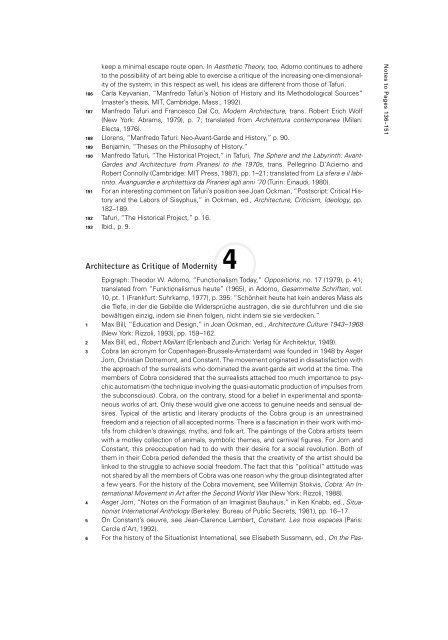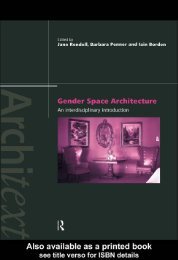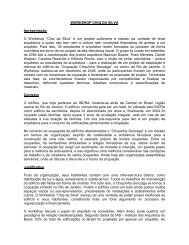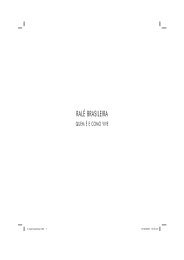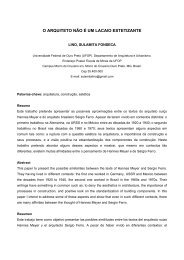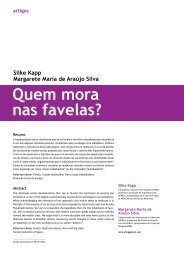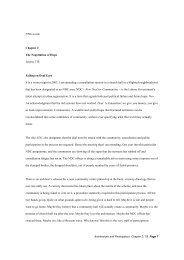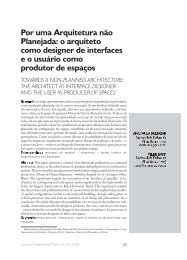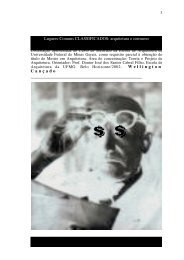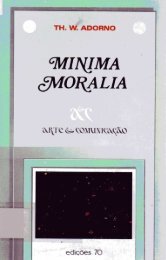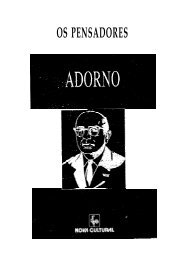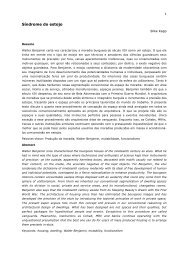Architecture and Modernity : A Critique
Architecture and Modernity : A Critique
Architecture and Modernity : A Critique
Create successful ePaper yourself
Turn your PDF publications into a flip-book with our unique Google optimized e-Paper software.
keep a minimal escape route open. In Aesthetic Theory, too, Adorno continues to adhere<br />
to the possibility of art being able to exercise a critique of the increasing one-dimensionality<br />
of the system; in this respect as well, his ideas are different from those of Tafuri.<br />
186 Carla Keyvanian, “Manfredo Tafuri’s Notion of History <strong>and</strong> Its Methodological Sources”<br />
(master’s thesis, MIT, Cambridge, Mass., 1992).<br />
187 Manfredo Tafuri <strong>and</strong> Francesco Dal Co, Modern <strong>Architecture</strong>, trans. Robert Erich Wolf<br />
(New York: Abrams, 1979), p. 7; translated from Architettura contemporanea (Milan:<br />
Electa, 1976).<br />
188 Llorens, “Manfredo Tafuri: Neo-Avant-Garde <strong>and</strong> History,” p. 90.<br />
189 Benjamin, “Theses on the Philosophy of History.”<br />
190 Manfredo Tafuri, “The Historical Project,” in Tafuri, The Sphere <strong>and</strong> the Labyrinth: Avant-<br />
Gardes <strong>and</strong> <strong>Architecture</strong> from Piranesi to the 1970s, trans. Pellegrino D’Acierno <strong>and</strong><br />
Robert Connolly (Cambridge: MIT Press, 1987), pp. 1–21; translated from La sfera e il labirinto.<br />
Avanguardie e architettura da Piranesi agli anni ‘70 (Turin: Einaudi, 1980).<br />
191 For an interesting comment on Tafuri’s position see Joan Ockman, “Postscript: Critical History<br />
<strong>and</strong> the Labors of Sisyphus,” in Ockman, ed., <strong>Architecture</strong>, Criticism, Ideology, pp.<br />
182–189.<br />
192 Tafuri, “The Historical Project,” p. 16.<br />
193 Ibid., p. 9.<br />
<strong>Architecture</strong> as <strong>Critique</strong> of <strong>Modernity</strong><br />
4<br />
Epigraph: Theodor W. Adorno, “Functionalism Today,” Oppositions, no. 17 (1979), p. 41;<br />
translated from “Funktionalismus heute” (1965), in Adorno, Gesammelte Schriften, vol.<br />
10, pt. 1 (Frankfurt: Suhrkamp, 1977), p. 395: “Schönheit heute hat kein <strong>and</strong>eres Mass als<br />
die Tiefe, in der die Gebilde die Widersprüche austragen, die sie durchfuhren und die sie<br />
bewältigen einzig, indem sie ihnen folgen, nicht indem sie sie verdecken.”<br />
1 Max Bill, “Education <strong>and</strong> Design,” in Joan Ockman, ed., <strong>Architecture</strong> Culture 1943–1968<br />
(New York: Rizzoli, 1993), pp. 159–162.<br />
2 Max Bill, ed., Robert Maillart (Erlenbach <strong>and</strong> Zurich: Verlag für Architektur, 1949).<br />
3 Cobra (an acronym for Copenhagen-Brussels-Amsterdam) was founded in 1948 by Asger<br />
Jorn, Christian Dotremont, <strong>and</strong> Constant. The movement originated in dissatisfaction with<br />
the approach of the surrealists who dominated the avant-garde art world at the time. The<br />
members of Cobra considered that the surrealists attached too much importance to psychic<br />
automatism (the technique involving the quasi-automatic production of impulses from<br />
the subconscious). Cobra, on the contrary, stood for a belief in experimental <strong>and</strong> spontaneous<br />
works of art. Only these would give one access to genuine needs <strong>and</strong> sensual desires.<br />
Typical of the artistic <strong>and</strong> literary products of the Cobra group is an unrestrained<br />
freedom <strong>and</strong> a rejection of all accepted norms. There is a fascination in their work with motifs<br />
from children’s drawings, myths, <strong>and</strong> folk art. The paintings of the Cobra artists teem<br />
with a motley collection of animals, symbolic themes, <strong>and</strong> carnival figures. For Jorn <strong>and</strong><br />
Constant, this preoccupation had to do with their desire for a social revolution. Both of<br />
them in their Cobra period defended the thesis that the creativity of the artist should be<br />
linked to the struggle to achieve social freedom. The fact that this “political” attitude was<br />
not shared by all the members of Cobra was one reason why the group disintegrated after<br />
a few years. For the history of the Cobra movement, see Willemijn Stokvis, Cobra: An International<br />
Movement in Art after the Second World War (New York: Rizzoli, 1988).<br />
4 Asger Jorn, “Notes on the Formation of an Imaginist Bauhaus,” in Ken Knabb, ed., Situationist<br />
International Anthology (Berkeley: Bureau of Public Secrets, 1981), pp. 16–17.<br />
5 On Constant’s oeuvre, see Jean-Clarence Lambert, Constant. Les trois espaces (Paris:<br />
Cercle d’Art, 1992).<br />
6 For the history of the Situationist International, see Elisabeth Sussmann, ed., On the Pas-<br />
Notes to Pages 136–151


